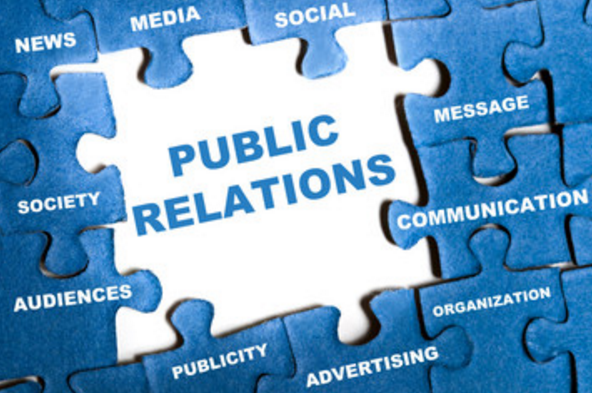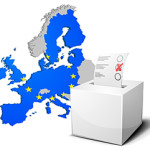
With all the headline news about tax reform and how it affects your taxes, don’t forget an essential element of support for many deductions based on the use of automobiles— your beginning mileage number. Whether you ultimately need it for your deduction off 2018’s taxes, if you don’t get the number now, you won’t have it next year when you need it. So, make sure you record the total current mileage on all your cars today and keep it someplace you will be able to get it at the end of next year. Your tax accountant or preparer will thank you!
Where is Your Public Relations?
 In the aftermath of the recent United Airlines fiasco, companies should take a very close look at where their Public Relations directors are reporting. United’s Public Relations Director reports to its head of human resources and labor relations. This is a mistake and may explain why United seems so inept at dealing with the problems they have encountered.
In the aftermath of the recent United Airlines fiasco, companies should take a very close look at where their Public Relations directors are reporting. United’s Public Relations Director reports to its head of human resources and labor relations. This is a mistake and may explain why United seems so inept at dealing with the problems they have encountered.
In today’s world, where social media can affect your bottom line in an instant, Public Relations needs to be elevated to the C-Suite. The best place for a Director of Public Relations to report is to the CEO.
Traditional management models have placed the most impactful divisions of a company as direct reports to the CEO. Since Human Resources, Sales and Marketing, Accounting and Finance, and Operations each significantly impact the bottom line, these traditionally have reported directly to the CEO.
Public Relations, for the most part, ended up as an extension of Sales and Marketing, as companies saw Public Relations as a means to get “free press”, or market exposure.
In today’s world, nothing can impact a company’s bottom line faster than social media. And the impacts can be, as in United’s case, immense. In light of this, companies would be well served to move their Public Relations to the C-Suite, reporting directly to the CEO.
Business of Profit v Business of Politics
The Business of Profit
Let’s propose a scenario. You are the CEO of a large company. Your company has a competitor of approximate equal size and equal capabilities. You and your competitor control, about 50/50 each, 90% of the current market. You are again competing in response to a request for proposal for the largest contract you’ve seen in four years.
Your top executives come to meet with you. They inform you that there are three options. Option A has 36% chance of being accepted. Option B has 42% chance of being accepted. Option C has 47% chance, but the executives believe that if Option C is submitted, it will be the winning contract because the company requesting the proposal actually likes Option C’s account manager, a lot.
You carefully look at the information. You ask questions. What would you do? Most CEOs would not even hesitate or lose sleep over the decision. They would choose Option C. Option C is about making sure you win the contract so you can make money. Option C is the Business of Profit.
The Business of Politics
Here is the scenario proposed as a result of a Bloomberg Political Poll released today. It shows if the United States Presidential Election were held now, the three republicans against the current democrat contender would come out as follows:
Clinton 54% v Trump 36%;
Clinton 51% v Cruz 42%; and
Clinton 42% v Kasich 47%.
The poll data shows that currently Kasich is the only republican that has a chance of winning the election. Also interesting is that Kasich is the ONLY candidate of either party with a positive favorability rating (hence the account manager in the previous scenario that is liked a lot) and Trump has the largest negative favorability rating.
This leads me to an interesting conclusion. The Business of Politics is not about winning the contract. Instead, it appears to be about personal aggrandizement. Take for example Mr. Trump. Let’s call him the executive that backs Option A. The best decision Mr. Trump could make if he wanted to company to win the contract would be for him to withdraw his option and support Option C. Same for Mr. Cruz. However, in the Business of Politics, it is not about winning the contract. Instead, it is about people’s own interests.
Business of Politics and Business of Profit
The fist scenario is written based on a focus of what is best for the company. The second on what is best for the individual. Life is not quite that simple. The Business of Profit and the Business of Politics tend to find themselves intertwined in every scenario. Ultimate success of business and political leaders often ends up being the result of how well the leader deals with the art of dealing with self-interest in order to accomplish the objectives of the organization. It’s More Than Just Numbers!
SEC’s Investor Advisory Committee Objects to FASB Materiality Proposals
 The Security and Exchange Commission’s (SEC) Investor Advisory Committee (IAC), in a January 21, 2016 letter to the Financial Accounting Standards Board (FASB), objected to two recent FASB proposals that would give companies more control over what does and does not get disclosed in financial statement footnotes by letting management and auditors determine materiality based on a subjective legal test rather than a mathematical percentage test.
The Security and Exchange Commission’s (SEC) Investor Advisory Committee (IAC), in a January 21, 2016 letter to the Financial Accounting Standards Board (FASB), objected to two recent FASB proposals that would give companies more control over what does and does not get disclosed in financial statement footnotes by letting management and auditors determine materiality based on a subjective legal test rather than a mathematical percentage test.
The two proposals were issued in September 2015 as Proposed Amendments to Statement of Financial Accounting Concepts (CON) No. 2015-300, Conceptual Framework for Financial Reporting Chapter 3: Qualitative Characteristics of Useful Financial Information, and Proposed Accounting Standards Update (ASU) No. 2015-310, Notes to Financial Statements (Topic 235): Assessing Whether Disclosures Are Material. The proposals call materiality “an entity-specific aspect of relevance based on the nature or magnitude or both of the items to which the information relates in the context of an individual entity’s financial report.” Information is material “if there is a substantial likelihood that the omitted or misstated item would have been viewed by a reasonable resource provider as having significantly altered the total mix of information.”
The IAC’s concerns are that these proposals would give management too much discretion about the information investors get. They are concerned that this test could be used to give even less information than is currently required… and there are many who believe the current standard does not require enough disclosure as it is.
The FASB plans to hold a roundtable that will discuss all of its disclosure projects, including the guidance for footnote disclosures for fair value measurements, pension liabilities, and income taxes in mid-2016.
Opinion versus Behavior in Statistical Prediction Models
 While reviewing some early poll data today (it being Election Day 2014) I came across a website that started my mind thinking about the difference between what people say in political polls and marketing surveys versus what they actually do. The site is www.predictit.com.
While reviewing some early poll data today (it being Election Day 2014) I came across a website that started my mind thinking about the difference between what people say in political polls and marketing surveys versus what they actually do. The site is www.predictit.com.
I Don’t Believe in Gambling
First let’s get this on the table. I don’t believe in gambling and I live in Hawaii, where tight anti-gambling laws would make it difficult for local residents to ever participate. But the theoretical concept behind the PredictIt website is rather intriguing.
Statistical Prediction Models
Statistical Prediction Models, more commonly known as “polls” or “surveys”, are based on mathematical models where you analyze opinions from an identifiable set in order to predict a future outcome. For example, “Will you vote for John Doe on Election Day” can have possible answers of “Yes”, “No”, or “Undecided”. The set is registered voters in John Doe’s district. Students of statistics become familiar with standard deviations and coefficient of variations and they know that as you ask more and more people in the set (registered voters in John Doe’s district), the predictable qualities of the percentages of answers received (like 45% say yes, 25% say no and 30% say undecided) become more accurate when compared against the actual outcome of the event.
Think of it this way. If you ask only a few people in John Doe’s district, your probability of your answers matching the actual outcome is pretty small. But if you asked everyone in his district, and then they did what they said they would do, your results would match the actual outcome exactly. The trick to statistics is finding the right sample size where statically the responses would accurately predict the actual outcome.
Opinion versus Behavior
What drives pollsters and marketing executives crazy is when polls and surveys that have correct sample sizes turn out to be wrong. Often when this happens it is not because the statisticians got the sample size wrong. Rather it’s that the opinion of the person being asked didn’t match actual behavior. People, it turns out, are quite human. It isn’t all that uncommon to respond to questions such as “Would you buy XYZ product at XYZ price?” and then when XYZ product comes on the market at XYZ price that same person does not buy it. Opinion has a nasty habit of not matching behavior, which is why pollsters sometimes look very stupid on election days.
Behavior Statistical Models
It would therefore make sense, at least theoretically, that if you could take a sample of your set’s behavior, instead of your set’s opinion, that your sample would have a much better success rate of predicted outcomes matching actual outcomes. The problem is you can’t measure behavior on something that does not yet exist, (i.e. a product, an election). Until they actually do it, it is only opinion, which may or may not match ultimate behavior.
This is where PredictIt comes in with an interesting theory. Rather than asking questions of opinion, PredictIt asks people to participate, with their own money at risk, in the polling or survey process, by having them actually bet on the outcome rather than opining to the outcome. The idea is that by having participants behave (put their money up) against the outcome, you are moving what would normally be a study of opinions into a study of behavior, which, at least theoretically, would have higher levels of successful predictions of actual outcomes.
Watch the Outcomes Differently This Year
So, as you are watching the actual election returns come in tonight and you see “upsets” where polling data didn’t match actual results, think about statistics, opinion and behavior analysis. It’s More Than Just Numbers!
One Step Closer to Convergence
 The Federal Accounting Standards Board (“FASB”) and the International Accounting Standards Board (“IASB”) came one step closer to convergence when on October 22, 2014 they agreed on the same broad definition of the world “Lease”. The agreed definition: “A Lease is a contract that conveys the right to use an asset for a period of time in exchange for consideration”.
The Federal Accounting Standards Board (“FASB”) and the International Accounting Standards Board (“IASB”) came one step closer to convergence when on October 22, 2014 they agreed on the same broad definition of the world “Lease”. The agreed definition: “A Lease is a contract that conveys the right to use an asset for a period of time in exchange for consideration”.
To graduates of any college Business Law class, the fact that it has taken the FASB and the IASB so long to come up with the same definition of the term “lease” that is found in the definition section of their law textbook, appears to be ridiculous. But the truth is that steps like this can have unintended consequences, so the analysis and thought process must be carefully and fully completed.
Why Is Convergence Important?
The United States of America, and therefore the Securities and Exchange Commission (“SEC”), currently requires that all publically traded companies comply with Generally Accepted Accounting Principles (“GAAP”) when producing their financial statements. GAAP is determined by the FASB. Most of the rest of the world prepares their financial statement in accordance with International Financial Reporting Standard (“IFRS”), which is determined by the IASB.
 Physical, economic and political barriers have been reduced over the years, thereby opeining up international trade to many more companies. While 50 years ago only a few companies would need to produce financial statements for both U.S. and foreign lenders and investors, today many even small companies are dealing with international sets of lenders and investors, which often has these companies having to deal with how to prepare financial statements when GAAP is different than IFRS. Only having to comply with one set of accounting rules will save these companies a lot of money in legal and accounting fees. Such savings can be passed on with either lower prices or higher earnings, or various combinations of both. It would also remove the current uncertainty regarding compliance.
Physical, economic and political barriers have been reduced over the years, thereby opeining up international trade to many more companies. While 50 years ago only a few companies would need to produce financial statements for both U.S. and foreign lenders and investors, today many even small companies are dealing with international sets of lenders and investors, which often has these companies having to deal with how to prepare financial statements when GAAP is different than IFRS. Only having to comply with one set of accounting rules will save these companies a lot of money in legal and accounting fees. Such savings can be passed on with either lower prices or higher earnings, or various combinations of both. It would also remove the current uncertainty regarding compliance.
So Why Is Convergence Difficult?
Both GAAP and IFRS have long histories (GAAP by far the longest) of “guidance” given through interpretative rulings. Even small changes is language can cause massive alterations to the complied guidance.
Why Worry About the Definition of a Lease
Take for example the definition of a lease. While it is very clear to a lawyer and to most non-accountants what a lease is, the accounting definition of a lease makes a world of difference. Both GAAP and IFRS require that leases be reported on a company’s Balance Sheet as a liability. Generally, both GAAP and IFRS do not require service contracts be listed as a liability on a company’s Balance Sheet. As a result, if you can call an agreement a service contract instead of a lease you can increase the stated net worth of a company on its financial statements by that amount.
Therein Lies the Rub
The official guidance and interpretive rulings issued by the FASB and the IASB differ on what makes an agreement a service contract. For example, it is common for companies like IBM to require that lessees of IBM copy machines only use IBM technicians and only IBM parts and supplies. The concern is that as GAAP and IFRS converge definitions, unintended loopholes will be created wherein a company could argue that because IBM requires IBM technicians, parts and supplies, IBM has not transferred the “right to use the asset” and therefore they could report it as a service contract instead of a lease.
What is Next?
The FASB and the IASB will continue to work together to determine whether guidance as to interpretation will be needed. The FASB has stated that it believes that the revenue recognition standards issues last May will control this issue and that further guidance is not necessary. Several IASB members have sharply criticized this position and are calling for additional guidance. It will take several additional rounds of discussions and proposals as both entities to determine the final outcome. The road to convergence is rough. But the end result of having only one set of accounting rules is well worth the trip!
Home Office Deduction Now Has Options
 The Internal Revenue Service for tax year 2013 has made taking a deduction for your home office easier. You can still use the old way (which may yield a higher deduction depending on your actual expenses and square feet used for your business) or you can use the new way, which is quite a simple calculation. But first, you need to make sure you qualify.
The Internal Revenue Service for tax year 2013 has made taking a deduction for your home office easier. You can still use the old way (which may yield a higher deduction depending on your actual expenses and square feet used for your business) or you can use the new way, which is quite a simple calculation. But first, you need to make sure you qualify.
Can I Take a Deduction for Business Use of my Home?
If you use part of your home for business, you may be able to deduct expenses for the business use of your home. The home office deduction is available for homeowners and renters, and applies to all types of homes, so long as the following is true:
1. You regularly and exclusively use part of your home for conducting business.
2. Your home is your principle place of business.
As long as both 1 and 2 are met, it does not matter whether you own your own business or whether you are an employee of someone else’s business.
What is the Simplified Option?
For taxable years starting on, or after, January 1, 2013 (filed beginning in 2014), you now have a simpler option for computing the business use of your home. For those who don’t like to keep track of their actual expenses, or who just didn’t keep track, the simplified method is like using the standard mileage rate for use of your car. All you need is number of square feet used.
The formula is very simple. You take the number of square feet of your home used for business and you times it by $5. For example, if you have a 10 foot by 10 foot office, you take 100 square feet (10 times 10) time $5 and you get $500. No fuss. No records.
There is one nasty catch, however. The maximum you can claim using this method is $1,500. That is equal to a 300 square foot office, which if square would measure 17.5 feet by 17.5 feet.
There is one big benefit, however, in addition to not having to keep records. You get to deduct all your schedule A items such as interest, property tax, etc., without adjustment.
The Actual Expenses Option
This option uses the actual expenses you incur to make the calculation. Here you add up your rent or mortgage interest, renters’ or homeowners’ insurance, real estate taxes and utilities, and multiply that times the percentage of your house allocable to your home office. For example, if all your allowed expenses add up to $35,000 and your home has 1,500 square feet and you use 100 square feet for your business, the calculation would be $35,000 divided by 1,500 times 100, (dollar amount of expenses times the percentage portion of your office), or $2,333. Your schedule A itemized expenses would then be reduced by any portion included in the $2,333 (the IRS won’t let you deduct it twice).
As a General Rule
As a general rule you can see that the larger your proportional use and/or the larger your total expenses, the Actual Expenses Option would give you a higher deduction, while the lower your proportional use and/or the lower your total expenses, the Simplified Method would give you a higher deduction. The only way to know for sure, however, is to keep your records and do the calculations both ways. Or, you can just bag it, and like standard mileage rates, just take what you can easily get.

If you want the most deductions possible, the most money back, the least amount of hassle, and you want it all legitimate and in compliance with all the tax laws, your very best bet may be to hire a professional. A professional who is worth their salt, will always be worth the money spent. Our sister company Wallace Associates Group is always there to answer your questions and help you determine which route is best for you.
Real Time Bidding – The New School
How “Old School” is your “Latest and Greatest” Marketing?
Let’s assume a common scenario. You’ve read about Search Engine Optimization. You’ve attended some online seminars about keyword searches. You have a Google AdWords account and you’re buying keyword search terms on a Pay-Per-Click Basis. You are aggressively monitoring your Analytics and your Click Through Rates. You feel good about yourself because you believe you are on the leading edge of the marketing frontier, right? Wrong!
The “Current” “Old School”
SEO, AdWords, PPC, and all their cousins, all focus solely on the prospective customer who is actually taking some kind of action to find you. They (your prospective customer) are typing keywords into a search engine and as a result they are hopefully being directed to your website through your SEO, ADWords, PPC and related work.
But you have to ask yourself, “What about all those who would be interested in my product if only they knew it existed?”
Boldly Entering the New Marketing Frontier
If you or your marketing/public relations agency are not currently putting your Real Time Bidding (“RTB”) plan into action, your “current old school ways” will leave you in the dust.
What is Real Time Bidding?
What, you ask, is Real-Time Bidding? Real-time Bidding (RTB), also called Programmatic Buying and Selling, is the process of selling and buying website display advertising one ad impression at a time.
Huh?
Let’s explain this with an example. Assume you own a website and you want to make some additional money. To do this, you can rent out a spot on your website, much like a landowner adjacent to a freeway does for a billboard. In our example let’s assume you lease your space to a company such as The Trade Desk (simply because they are one of the best).
Now, let’s assume someone is visiting your website for whatever reason. The Trade Desk looks at this someone’s information as your website is loading on your computer and sends a bid request out to potential advertisers with as much information as is available.
 The bid request may include something like, “We have a 48 year old male from San Diego, California, who recently visited conservation/recycling websites, the Smithsonian website, a car manufacturer website, and who recently bought Bruno Mars concert tickets. Who is interested in that demographic and how much will you pay?”
The bid request may include something like, “We have a 48 year old male from San Diego, California, who recently visited conservation/recycling websites, the Smithsonian website, a car manufacturer website, and who recently bought Bruno Mars concert tickets. Who is interested in that demographic and how much will you pay?”
Now, on the other side, three companies have informed The Trade Desk that their target market demographic is 45 to 55 year old males living in San Diego who care about the environment, history and cars, and are Bruno Mars fans. The company with the highest bid wins and its advertisement gets placed on your website.
The amazing thing about this process is how fast and how often it takes place. The entire series of electronic communications takes place in 300 to 500 milliseconds, causing no visible delay to the person visiting your website.
How is this “New School”?
Notice the difference. SEO, AdWords and PPC programs only put your advertisement in front of people who are actively searching for you, which is likely only a small portion of your potential sales demographic. Alternatively, Real Time Bidding will put your message in front of those who are not actively looking for you but are in your target customer profile. In other words, Real Time Bidding puts you in front of your full target demographic. This has the potential of significantly increasing your total sales since you are reaching more complete demographic sectors. With Real Time Bidding, your advertisement is placed in front of potential customers who identify themselves through their normal, daily routines or habits as being in your target demographic.
Conclusion/Recommendation
Don’t get me wrong. I’m not saying that you should curtail any of your SEO, AdWords or PPC programs. In truth, you should continue to hone those activities and improve them, while assessing your results. However, if you are not advancing into the future of Real Time Bidding, you are going to be leaving a significant portion of your total potential target demographic untouched and “ain’t nobody got time for that!”
Small Changes Can Make A Big Difference
People often spend countless hours developing a fine tuned business plan. They then bet their careers on successful implementation of their plan. What happens if there are slight changes in markets and conditions they so carefully analyzed in order to come up with their plan? If like the atomic clock versus the standard rotational clock, unless adjustments are made to keep the two in sync, catastrophe could result.
The time it takes for the earth to make one complete revolution is 86,400 seconds…almost. If left un-adjusted, after about 1,000 years our clocks would be off by about an hour. In 1972 a more accurate measurement of time was adopted, known by most of us as the atomic clock. This clock ticks with microwave light at about nine billion times each second, which allows for a much more precise form of measurement. Twenty-five times since 1972 we’ve had “leap- seconds”, which work like “leap-years” in keeping the two types of time measurements equal. The timing and amount of the clock adjustments are coordinated through the combined analysis of labs from 50 nations, each analyzing data in the respective locations. Today, in order to keep them equal, at 7:59:59 pm Eastern another 1 second adjustment will be made.
What could happen if these slight adjustments were not made? Navigations systems use extreme precision at the nanosecond level (one billionth of a second). For airplane navigation, satellite communications, etc., even a billionth of a second can be important. Remember, in one billionth of a second light travels about a foot.
Business leaders and managers could learn a lot from the world’s time-keepers. If each department (like the labs in different countries) constantly monitored and reported changes, and if leaders (like the 50 countries) used the provided information to make even small changes in their plans, their chances of avoiding catastrophes will be greatly increased.


